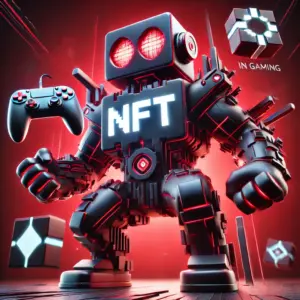Introduction
The ever-evolving world of technology has opened doors to a plethora of opportunities, from connecting with loved ones across continents to revolutionizing the way we interact with art and media. However, the benefits of this digital revolution have not been evenly distributed. A persistent digital divide exists, leaving many individuals and communities behind. This divide is particularly evident in the realm of non-fungible tokens (NFTs). While NFTs have the potential to democratize ownership and empower creators, they are still largely inaccessible to a significant portion of the population. This article delves into the challenges of bridging the digital divide and making NFTs accessible to everyone.
Understanding the Digital Divide
The digital divide refers to the gap between individuals and communities with access to technology and those without. This divide can manifest in various forms, including differences in internet connectivity, device ownership, digital skills, and knowledge of digital tools. The digital divide has significant consequences, hindering access to education, employment, healthcare, and other essential services.
NFTs and the Digital Divide
The emergence of NFTs has further highlighted the digital divide. NFTs are unique digital tokens that represent ownership of digital assets, such as art, music, or collectibles. They are stored on blockchain technology, a distributed ledger that records ownership information securely. While NFTs offer promising opportunities for creators and collectors, they also pose challenges in terms of accessibility and affordability.
Challenges in Accessing NFTs
Several factors contribute to the challenges in accessing NFTs:
- Internet Connectivity: Reliable and affordable internet access is crucial for participating in the NFT ecosystem. However, many individuals and communities lack adequate internet infrastructure, limiting their ability to connect to NFT marketplaces and engage with NFT projects.
- Device Ownership: Access to a computer or mobile device with sufficient processing power and storage is essential for interacting with NFTs. However, many individuals cannot afford these devices or lack the technical skills to use them effectively.
- Digital Literacy: Understanding the intricacies of blockchain technology, cryptocurrency, and NFTs requires a certain level of digital literacy. This knowledge gap can prevent individuals from participating in the NFT ecosystem due to apprehension or confusion.
- Financial Barriers: NFTs often command high prices, making them inaccessible to many individuals. The upfront costs of purchasing NFTs, coupled with transaction fees and gas fees, can be prohibitive to those with limited financial means.
Addressing the Challenges
Bridging the digital divide and making NFTs accessible to everyone requires a multi-pronged approach:
- Expanding Internet Access: Governments, telecommunications companies, and non-profit organizations can collaborate to expand internet access to underserved communities, particularly in rural and developing regions. This includes investing in infrastructure development, providing subsidized access plans, and promoting digital literacy initiatives.
- Promoting Affordable Devices: Making affordable and accessible devices is crucial for enabling wider participation in the NFT ecosystem. This could involve offering subsidized devices, promoting open-source hardware solutions, and supporting initiatives that refurbish and distribute used devices.
- Enhancing Digital Literacy: Providing accessible and comprehensive digital literacy education is essential for empowering individuals to understand and navigate the NFT space. This includes offering online courses, workshops, and community support groups to bridge the knowledge gap.
- Promoting Alternative NFT Models: Exploring alternative NFT models, such as fractionalized ownership or non-exclusive NFTs, can make NFTs more accessible to a wider audience by reducing the upfront costs and barriers to entry.
- Fostering Inclusive Communities: Creating inclusive and welcoming communities around NFTs is crucial for ensuring that everyone has a fair chance to participate. This involves promoting diversity, addressing cultural sensitivities, and providing clear guidelines and resources for new entrants.
Conclusion
Bridging the digital divide and making NFTs accessible to everyone is not only a matter of equity and inclusion but also a strategic imperative for the future of the NFT ecosystem. By addressing the challenges outlined above, we can foster a more equitable and inclusive NFT landscape that empowers individuals and communities from all walks of life to engage with this transformative technology.






